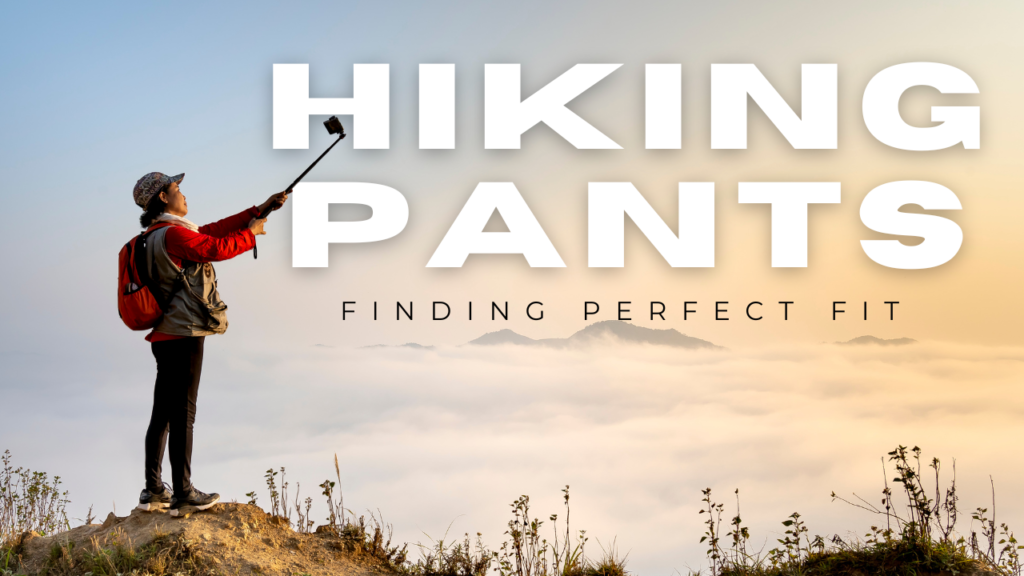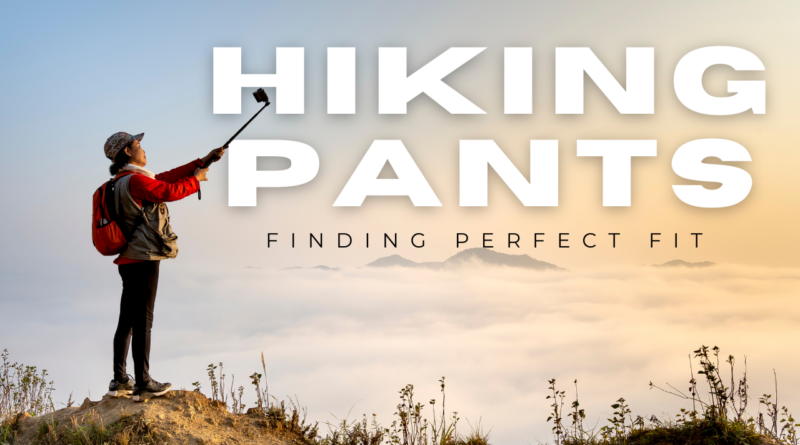Hiking Pants for All Body Types: Finding Your Perfect Fit

In This Article:
Hiking Pants for All Body Types: Finding Your Perfect Fit
When it comes to hiking, the right gear can make a huge difference in your outdoor experience. One of the most important components of any hiker’s wardrobe is hiking pants. They provide comfort, protection, and mobility on the trail. However, not all hiking pants are created equal, and finding the right fit for your body type can be a challenge. This guide will help you understand how to choose the best hiking pants to suit your unique shape and preferences, ensuring you’re prepared for your next adventure.
Understanding the Importance of Fit
Comfort and Freedom of Movement
Hiking often involves strenuous activity, from climbing steep mountains to navigating rocky terrain. Well-fitting hiking pants are crucial for maintaining comfort and allowing you to move freely. Poorly fitted pants can cause friction, limit mobility, and distract from the stunning landscapes you’re out there to enjoy.
Protection from the elements
Hiking pants provide protection from sun, wind, rain, and abrasions from plants or rocks. The right fit ensures that these protective features work effectively, whether it’s moisture-wicking material to keep you dry or UPF protection to protect against harmful UV rays.
Different body types and their needs
Understanding your body type is the first step to finding hiking pants that fit well. Here are the main body types and considerations for each:
1. Apple-shaped body
Features: broad shoulders, full bust, less defined waist, and slim hips.
- Look for pants that offer a relaxed or straight fit around the waist to provide comfort.
- Choose mid-rise options that help define your waist without feeling restrictive.
- Consider an adjustable waistband or elastic band for a better fit.
- Recommended Styles: Relaxed-fit cargo pants or stretch-woven hiking pants.
2. Pear-shaped body
Characteristics: Wide hips, narrow shoulders, and a defined waist.
- Choose pants with a higher rise to comfortably accommodate your hips.
- Look for styles that offer a little stretch for ease of movement.
- Avoid overly baggy pants as they can create an unbalanced silhouette.
- Recommended Styles: Bootcut hiking pants or slim-fit styles that offer a tailored look without being too tight.
3. Athletic Body
Characteristics: Muscular build with broad shoulders and narrow hips
- Look for pants designed with a straight or tapered fit to accentuate your body without being too tight.
- Look for features like articulated knees for better mobility.
- Consider fabrics with a little stretch for comfort and flexibility.
- Recommended Styles: Tapered fit pants or stretchy hiking pants designed for movement.
4. Hourglass Body
Features: Balanced shoulders and hips and a defined waist.
- Choose high-waist options to accentuate your waist.
- Choose pants that provide a fitted silhouette but aren’t too tight.
- Look for styles with a little stretch for added comfort.
- Recommended Styles: Fitted hiking pants or straight-leg options that accentuate your curves.
5. Plus Size
Features: Varies widely, often with fuller busts, waists, and hips.
- Look for brands that specialize in plus-size options that offer an extended size range.
- Look for pants with a wide waistband to avoid digging into your skin.
- Consider moisture-wicking and breathable fabrics to enhance comfort.
- Recommended styles: Relaxed-fit hiking pants or those specifically designed for curvy shapes.
Key features to consider when buying hiking pants
When looking for the right hiking pants, keep the following features in mind:
1. Material
Breathability: Look for moisture-wicking materials that help keep you dry during sweaty hikes. Fabrics like nylon or polyester blends are great choices.
Water resistance: If you plan on hiking in wet conditions, consider pants with a water-resistant coating or made from waterproof materials.
Durability: Hiking pants should be strong enough to withstand abrasions and tearing. Look for strong seams and durable fabric.
2. Fit and size
Sizing: Always refer to the brand’s size chart. Sizes can vary significantly between brands, so try several options if possible.
Adjustable features: Pants with adjustable waistbands or cuffs can help you achieve a customized fit, and accommodate layers, or personal preferences.
3. Pockets and Storage
Functional pockets: Look for hiking pants with multiple pockets to hold essentials like maps, snacks, and small tools. Zippered pockets can help keep your belongings secure.
Cargo options: Cargo pants are great for extra storage, but make sure they aren’t bulky where they aren’t needed.
4. Leg style and length
Length options: Consider full-length, capris, or shorts, depending on the climate and terrain.
Leg style: Tapered or straight-leg styles can affect comfort and functionality on the trail.
5. Adjustable features
Cuffs and waistband: Adjustable cuffs and waistbands allow you to customize fit and comfort, especially if you wear multiple layers underneath.
Try before you buy
1. Mobility test
When trying hiking pants, move around as you would when walking on the trail. Bend, sit down, and stretch to make sure the pants don’t restrict movement or make you feel uncomfortable.
2. Check for friction
Pay attention to areas where seams may rub against your skin. Spend a few minutes sitting and walking around in the pants to identify potential discomfort.
3. Consider layers
If you plan to wear a base layer or thermal layer underneath, bring them along when wearing the hiking pants to ensure they fit comfortably together.
Brands that cater to all body types
While many outdoor brands offer a variety of sizes and fit, here are a few that are known for their inclusive sizing and quality:
Patagonia: Known for its commitment to sustainability and offering a variety of sizes.
Columbia: Offers a wide range of styles and fits for different body types.
The North Face: Offers high-quality hiking pants with a variety of options for different body shapes.
REI Co-op: Their house brand offers versatile options and a wide size range.
Lands’ End: Known for their plus-size options, they offer functional and stylish hiking pants.
Maintenance tips for your hiking pants
To ensure your hiking pants last through many adventures, consider the following care tips:
1. Washing
Follow the care instructions: Always check the label for washing instructions. Some hiking pants may require special care, such as hand washing or air drying.
Avoid fabric softeners: These can damage the moisture-wicking properties of the fabric.
2. Storage
Keep them dry: Store hiking pants in a cool, dry place to prevent mold and odors.
Avoid folding creases: Hanging them can help them maintain their shape and prevent unwanted creases.
3. Repair
Patch holes immediately: Small rips can be repaired with a fabric patch or by sewing. Don’t wait for them to get bigger!
The Conclusion, What’s best for you?
Finding the right hiking pants involves understanding your body type and considering key features that enhance comfort, mobility, and durability. By taking your unique shape into account and exploring brands with different fits, you can confidently choose hiking pants that will make your outdoor experiences enjoyable and comfortable. Whether you’re going on a challenging mountain trek or a relaxing nature walk, the right hiking pants will not only keep you comfortable but also make you feel confident and ready to explore the great outdoors. So get ready, hit the trails, and enjoy every moment of your hiking adventure!



